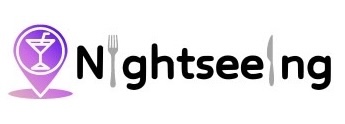Entering the restaurant
Upon entering a restaurant, customers are greeted with the expression “irasshaimase” meaning “welcome, please come in”. The waiter or waitress will ask you how many people are in your party and then lead you to your table.
While a majority of restaurants in Japan provide Western-style tables and chairs, low traditional tables with cushions to sit on the floor are also common and referred to as zashiki. Some restaurants feature both styles, and you may be asked which you prefer. In case of zashiki-style seating, you should remove your shoes at the entrance to the restaurant or before stepping onto the sitting area.
Smoking is generally prohibited at restaurants in Japan; however, small-sized restaurants that predate the anti-smoking law of 2020 may allow smoking if they display a sign at the entrance stating that smoking is allowed.
Ordering and eating
After you are seated, each diner is usually served with a free glass of water or tea. If it is not served, free water or tea is usually available for self service somewhere in the restaurant. Everyone will also receive a wet towel (oshibori) which is used to clean your hands before eating. If chopsticks are not already set, you can usually find some in a box on the table. Most often, they are disposable wooden chopsticks that need to be separated into two before use.
While many restaurants provide illustrated menus, others may have only Japanesemenus, or the restaurant’s offerings may instead be posted on the walls. If you are ever in doubt on what to order or find that you cannot read the menu, try asking for the recommendations (osusume) or the chef’s choice (omakase). The latter will often get you good, prix fixe style meals, but be prepared to be adventurous and do not expect it to be cheap.
Once you are ready to order, you can signal the restaurant staff by saying “sumimasen” (excuse me), or if available, press the call button at the table. Once you have finished ordering, the waitress will often repeat your order back to you for confirmation.
Since the Coronavirus pandemic, ordering through a tablet computer or touch screen at the table or through one’s own mobile phoneafter scanning a QR code has become common at a considerable number of restaurants. Many of these systems are multilingual and illustrated, and a few also handle the payment procedure.
At some restaurants, such as izakaya, it is common for everyone in the party to share dishes. At other establishments, however, each diner is expected to order individually.
Illustrated menu at a typical family restaurant (left) and menu displayed on the wall (right)
Chopsticks box
A QR code found on the table allowing for orders via one’s mobile phone
Paying
The bill will be presented face down either as you receive the meal or after you have finished eating. In most restaurants you are supposed to bring your bill to the cashier near the exit when leaving, as it is not common to pay at the table. Paying in cash remains common, but many restaurants also accept payment by credit cards and IC cards such as Suica.
Some restaurants, especially cheaper ones, have slightly different systems for ordering and paying. In many ramen and gyudonrestaurants, for example, “meal tickets” are bought at a vending machine near the store’s entrance upon entering and handed over to the staff who then prepare and serve the meal.
It is not customary to tip in Japan, and if you do, you will probably find the restaurant staff chasing you down in order to give back any money left behind. Instead, it is polite to say “gochisosama deshita” (“thank you for the meal”) when leaving.
